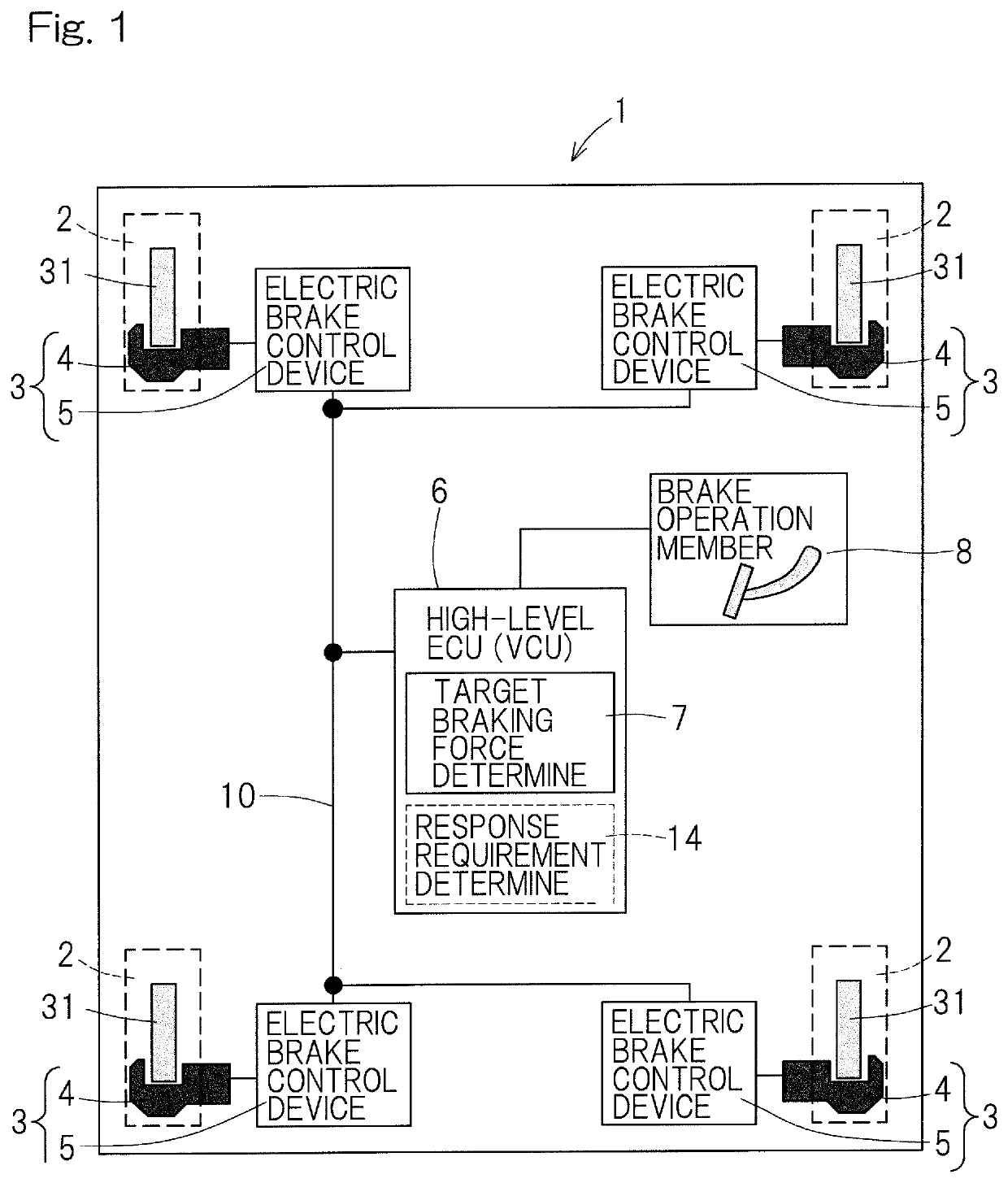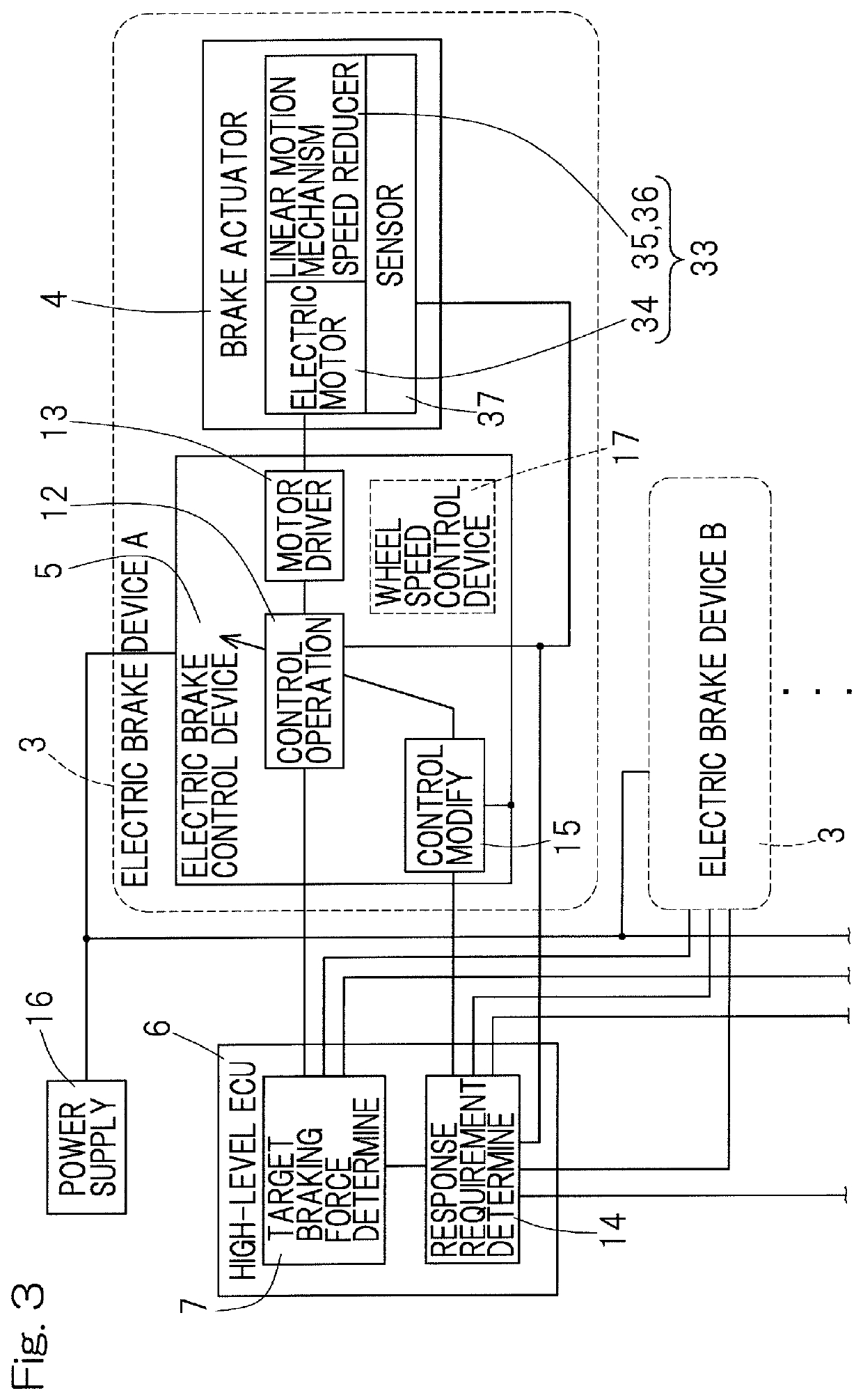Electric brake system
a technology of brake system and electric brake, which is applied in the direction of brake system, process and machine control, instruments, etc., can solve the problems of increased braking distance or deterioration of brake feeling, uncomfortable driving of drivers or the like, etc., to improve safety, reduce operation sound and power consumption, and improve safety.
- Summary
- Abstract
- Description
- Claims
- Application Information
AI Technical Summary
Benefits of technology
Problems solved by technology
Method used
Image
Examples
Embodiment Construction
[0031]An embodiment of the present invention will be described with reference to the drawings. FIG. 1 shows an example in which an electric brake system of the present embodiment is used in a vehicle such as an automobile having four wheels. In the vehicle 1, an electric brake device 3 is provided to each of left and right wheels 2 on the front side (upper side in FIG. 1) and the rear side. A travelling driving source (not shown) is an internal combustion engine or an electric motor, or both of them. The electric brake device 3 may be a friction brake device. The electric brake device 3 is composed of a brake actuator 4, which is a mechanistic part, and an electric brake control device 5 for controlling the brake actuator 4. It is noted that the configuration shown in the present embodiment is a configuration needed for implementing the electric brake system proposed by the present inventors, and other functions such as a redundant function may be added appropriately as necessary.
[0...
PUM
 Login to View More
Login to View More Abstract
Description
Claims
Application Information
 Login to View More
Login to View More - R&D
- Intellectual Property
- Life Sciences
- Materials
- Tech Scout
- Unparalleled Data Quality
- Higher Quality Content
- 60% Fewer Hallucinations
Browse by: Latest US Patents, China's latest patents, Technical Efficacy Thesaurus, Application Domain, Technology Topic, Popular Technical Reports.
© 2025 PatSnap. All rights reserved.Legal|Privacy policy|Modern Slavery Act Transparency Statement|Sitemap|About US| Contact US: help@patsnap.com



